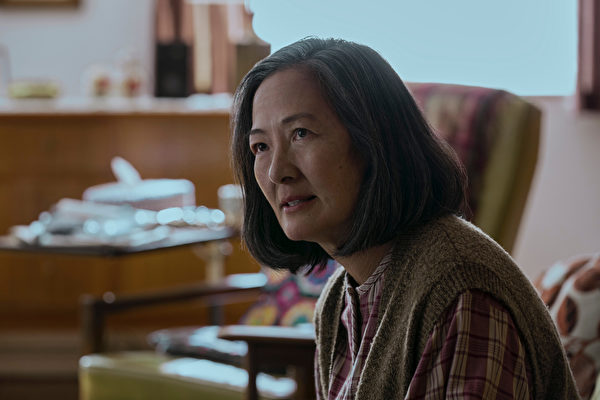“We cannot coexist with deceivers…” The old-style loudspeaker echoed the distant Trisolaran’s last words to humanity, followed by an endless silence, sparking a 400-year entanglement between humans and extraterrestrial beings.
Netflix’s brand-new 8-episode sci-fi mystery series “The Three-Body Problem,” adapted from the Chinese best-selling sci-fi novel of the same name, invested $200 million in production. Since its release on March 21st, it has consistently ranked high in viewership charts. The series has a fast pace, broad knowledge coverage, and vivid character portrayals. The story, using an alien theme, delves into the source of human nature of good and evil, which the author believes is the key to the series’ success.
“The Three-Body Problem” story begins with abnormal reactions occurring in particle accelerators worldwide, shattering people’s trust in scientific theories. Concurrently, seasoned scientists worldwide meet mysterious deaths, either by suicide or under suspicious circumstances, leaving authorities clueless. The “Oxford Five,” five brilliant scientists from the UK, embark on finding the truth behind these events, which trace back to the period of the Chinese Cultural Revolution.
The Netflix adaptation of “The Three-Body Problem” differs from the original Chinese novel in its opening scene, a bloody and intense portrayal of the “Cultural Revolution” tragedies in 1966 at Tsinghua University. Physics professor Ye Zhetai is brutally killed in front of his daughter’s eyes and his wife’s betrayal, becoming a key figure triggering a global crisis years later.
The author of “The Three-Body Problem,” Liu Cixin, has a trilogy including “The Three-Body Problem,” “The Dark Forest,” and “Death’s End,” winning the 2015 Hugo Award for Best Novel, the first Asian work to receive this honor. It was also nominated for the 2014 Nebula Award by the Science Fiction and Fantasy Writers of America, becoming one of China’s best-selling sci-fi novels with 30 million copies sold worldwide.
The Netflix series integrates the storyline and internationalizes the main characters. The “Oxford Five” includes actors of different ethnicities. The show incorporates various concepts from different parts of the novel. The author finds Netflix’s version more streamlined and retaining the essence of the original work.
Sci-fi, action, and suspense scenes are the eye-catching elements of “The Three-Body Problem,” a major production series. Interwoven fairy tales play crucial roles in advancing the plot. The use of these tales serves as foreshadowing and drives the narrative forward.
One of the most intriguing scenes in the series is the communication between Mike Evans aboard the cruise ship “Judgment Day” and the Trisolarans. He acts as a bridge between Earth and the aliens, trying to introduce human civilization to them. However, inadvertently, his tales lead to misunderstandings, turning innocent stories into catalysts for war.
Initially, the Trisolarans communicate smoothly with Mike, but their suspicions about humans are triggered by interpretations of fairy tales, leading them to doubt humanity’s intentions and perceive humans as cunning adversaries. The gradual breakdown of trust leads to a declaration of war by the Trisolarans, displaying “You are insects” across electronic devices worldwide.
In the seventh episode, before leaving the UK, Ye Wenjie meets Saul and shares an anecdote about Einstein and God, warning against provoking higher powers. Her experiences from the “Cultural Revolution,” witnessing her father’s death at the hands of the Red Guards and later facing retribution herself, deepen her desolation and lack of trust, solidifying her determination to assist the aliens in taking over the world.
Despite the invasion theme in “The Three-Body Problem,” the most captivating part lies in the reflection of the era and the exploration of good and evil within human nature.
The twists and turns from the abhorrent acts of the “Cultural Revolution” to the fear of deceit from humans in fairy tales reveal deeper societal and psychological issues. The interaction with the alien spacecraft named “Judgment Day” raises questions about who deserves judgment in society.
The invasion by the Trisolarans is a consequence of humanity’s moral decay. Even with advanced weaponry, humans cannot defend against the aliens. The Trisolarans struggle with understanding human complexities, especially emotions and intelligence.
Though it takes the Trisolarans 400 years to reach Earth physically, they deploy the supercomputer “Sophon” to infiltrate human lives, eroding privacy completely. The portrayal resonates with the infiltration of AI in people’s daily lives, where data is exploited for various purposes, resulting in increased reliance on technology and AI’s potential control.
The Trisolarans introduce the “Three-Body Game” AR helmet, immersing scientists in a virtual reality that guides them to think like the Trisolarans, blurring the lines between reality and gaming.
This narrative reflects the growing influence of AI, akin to the Trisolarans’ control through various aspects of human life. The increasing dependence on AI may appear convenient but risks surrendering human autonomy and intelligence to external control.
In the final episode, anticipating the alien invasion, humanity implements the “Wallfacer Project.” The “Wallfacers” are chosen individuals tasked with countering the aliens while maintaining independent thinking to thwart extraterrestrial control.
In conclusion, the Netflix version of “The Three-Body Problem” offers a more international perspective, delving into the CCP’s history while exploring profound storytelling dimensions. Viewers are eager for a second season, anticipating the series’ future narrative directions. An insightful examination of the series encourages audiences to contemplate the complexities of human nature and the impact of external forces on society.

